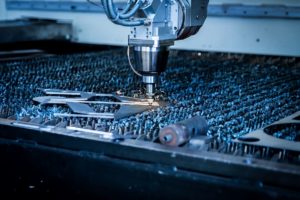 The word plasma may not be new to you, but in this contest, it may be quite a foreign word. It does not refer to the commonly known blood component but rather refers to a state of matter. What? But the states of matter commonly known to most men and women are three: solids, liquids, and gases. Well, plasma is the fourth state of matter.
The word plasma may not be new to you, but in this contest, it may be quite a foreign word. It does not refer to the commonly known blood component but rather refers to a state of matter. What? But the states of matter commonly known to most men and women are three: solids, liquids, and gases. Well, plasma is the fourth state of matter.
To properly explain what plasma is to bring you to the concept of a plasma cutter, we have to go back to our elementary school basics. There are three states of matter, which can change from one form to another on the introduction of energy, which is commonly heat. As such, ice, a solid, changes into water, a liquid, when heated, and when the heating continues, the energy breaks down the water molecules into steam, the gaseous state of matter. Beyond this, when a gas continues being heated it turns into plasma, the fourth state of matter.
The primary difference between a gas and plasma is that plasma is a good conductor of electricity. As heat increases to turn a gas into plasma, the gases tend to be ionized into equal numbers of positive ions and electrons that conduct electricity. It is at times referred to as electrically heated gas. If you’re familiar with the intricate details of the matter, think of plasma as electrons flowing in the air, instead of gaseous molecules.
A Plasma Wizard plasma cutter uses this stream of electricity flowing in the gas-like-plasma by constricting it through a small aperture. Since the stream is moving at an extremely fast and dense speed, it can easily find its way through metals, hereby cutting them. It uses a plasma torch to give a cleaner faster and more efficient cutting process than that of oxyfuel.
How does the system work?
The details of the process are quite simple and begin with plasma arc formation. This is when a gas like shop air, nitrogen, oxygen, or argon is forced through a small nozzle inside a plasma cutter torch. Electricity is then generated from a remote power supply then introduced to the gas under high pressure which turns into a plasma jet at impeccable temperatures of above 35,000° F.
This makes the plasma cutter effective for cutting through conductive materials like cast iron, titanium, brass, copper, aluminium, stainless steel, and mild steel. The only problem with the system, however, would be the unsharpened edge on some metals, which have a low melting temperature, hence melt on impact with the stream, destroying the quality of the edge.
What Components Make Up the Plasma System?
Remote Source of Power – It converts Alternating Current from the mainline voltage into a smooth, constant DC voltage ranging from 200 to 400VDC which maintains the plasma arc mentioned before. Depending on the thickness of the metal being cut, the voltage can be regulated.
Arc Starting Console – The ASC circuit yields a 5,000 VAC at 2 MHz voltage which sparks the plasma torch to start the plasm arc.
Plasma Torch-It aligns and cools the consumable parts (nozzle, swirl ring, and electrode) needed for plasma arc generation. Additionally, a shielding cap can be added to the torch to maintain a streamlined flow, hereby giving a cleaner cut.
Types of Plasma Systems in the Market
Most of the plasma systems available in the market use shop air to generate plasma and the orifice in the system determines the plasma arc shape. These are conventional systems that have an amperage of 12000-20000 amperes per square inch. On the other hand, there are high current density systems known as precision plasma system. They give an intricate, sharp, and high-quality cut, meaning they are more complex than the former. Additionally, their plasma arc amperage ranges from 40000 to 50000 ampers per square inch. They also use high quality refines gases like nitrogen, hydrogen, high purity air and oxygen.
Handheld Operation
Typical handheld plasma systems have consumable parts that are in contact with one another when the torch is off. After the trigger is squeezed, direct current launches the plasma arc, which starts building up the pressure. This then makes the consumable parts separate, which ignites a spark that transforms the gas into a plasma jet, which is then directed to the workpiece being cut. As long as the trigger is held, a stream is produced. Quite an efficient process, one that is used in the Tomahawk Air Plasma handheld system!